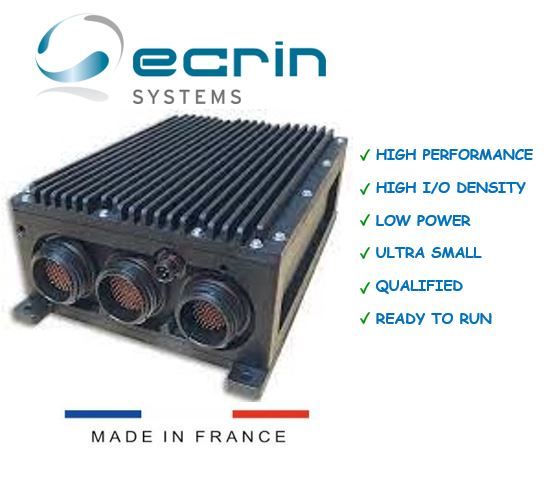Introduction
A ruggedized ethernet switch is a piece of network equipment specifically developed to withstand extreme and harsh environments.
It can withstand higher operating temperature ranges, vibrations and shocks than commercially available industrial ethernet switches.
It is generally qualified to aeronautical or military standards such as DO160 or MIL-STD-810 (Environmental), MIL- STD-461 (EMC) and MIL-STD-1275 (Power).
Examples of ECUs ruggedized to these standards: ruggedized on-board ECUs from the onyx range

It is available in various configurations, with RJ45 or fiber-optic ethernet ports. These Ethernet ports are available in gigabit or 10 gigabit ethernet, and some can also offer Gigabit POE (Power Over Ethernet).
In contrast to industrial switches, the connectors used are generally managed with military ones, such as MIL 38999 connectors or RJ Field connectors qualified for harsh environments.
This type of Ethernet switch is not DIN rail-mountable, thanks to its cooling conduction design, specifically adapted to passive heat dissipation.
Switches are available either in 19" format, or in specific formats to optimize weight and dimensions.

Key features of a rugged ethernet switch:
The key features of a rugged switch are as follows:
- Robust design based on resistant materials for enhanced environmental resistance
- Resistance to dust and water intrusion, with a high IP rating.
- Certification to DO160 or MIL-STD-810, MIL-STD-461 to withstand shock and vibration, as well as harsh electromagnetic environments.
- Extended operating temperature range, generally from -40°c to +70°c or even +85°c, to adapt to extreme environments.
- A reinforced redundant power supply management to withstand voltage fluctuations and ensure continuity of service.
- Layer 2 & 3 managed
- Redundancy and failures tolerance using network redundancy protocols (e.g., RSTP, Rapid Spanning Tree Protocol) to ensure resilience.
- Enhanced security management software features. It incorporates advanced security protocols (e.g. IEEE 802.1X, VLANS, etc.) to protect the system against a wide range of cyber threats.
Ruggedized switch applications and benefits:
Such switches are used in embedded aeronautical and military environments (all-terrain vehicles, surface ships, aircraft ...) but also in critical infrastructures or key industrial sectors requiring operational reliability.
Their advantages are:
- Operational reliability to minimize downtime thanks to robust design and automatic recovery features
- Resistance to harsh environments
- Enhanced security against malicious attacks and unauthorized intrusions. Some ruggedized switches can isolate networks to prevent the spread of threats, ensuring flawless operational reliability.
- Controlled hardware durability for a long switch life cycle
- Some ruggedized switches now incorporate a new protocol called TSN (Time Sensitive Network), enabling a deterministic Ethernet solution to guarantee bandwidth, deterministic latency and improved network reliability:
Examples of ruggedized switches on the market: ruggedized ethernet switches from Ecrin Systems
